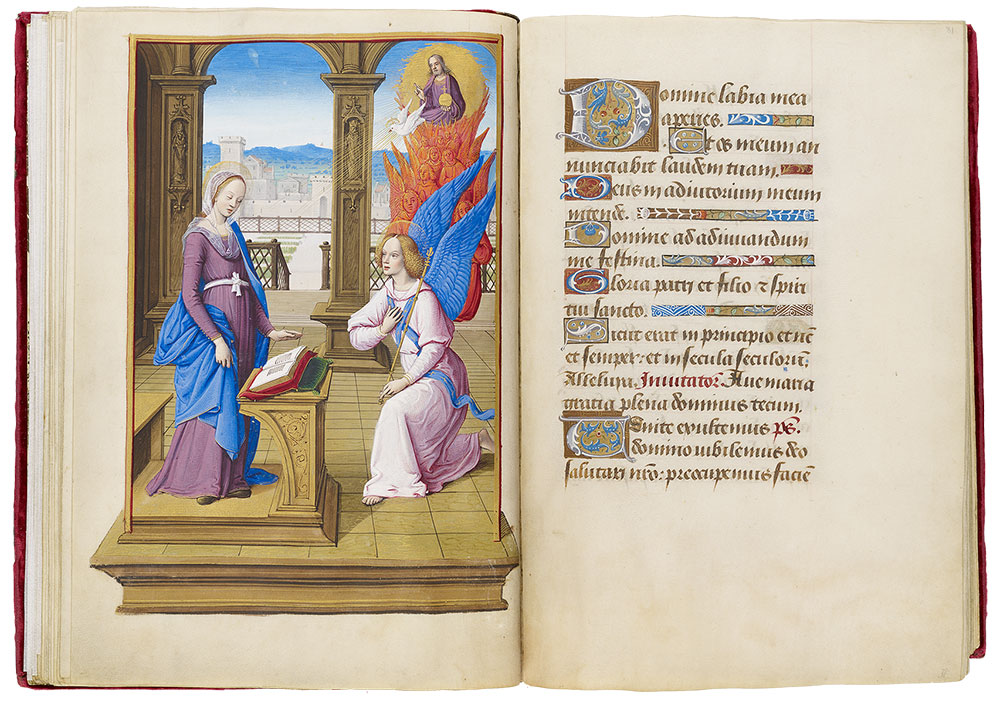
Matins: Annunciation
Hours of Henry VIII
Illuminated by Jean Poyer
Gift of the Heineman Foundation, 1977
Matins: Annunciation (fol. 30v)
The traditional opening miniature in most Hours of the Virgin is the Annunciation. We are about to witness the Incarnation of Christ, when the eternal Son of God took human flesh from his human mother.
The Annunciation takes place in an open portico, whose two arches frame and heighten the figures, while diagonals and orthogonals lead the eye into the garden and distant city, offering testimony to Poyer's legendary skill in the use of perspective.
God the Father, in a flaming aureole supported by a choir of red angels, dispatches the Holy Spirit in the form of a dove, who follows a path of golden rays toward the Virgin. While Poyer may have intended the red angels to be seraphim, the highest order of angels and those closest to God, he gave them full bodies and one rather than three pairs of wings.
Mary, who stands rather than kneels, has her eyes turned downward on an open book in a red chemise binding supported by a green cushion. In Annunciations from the late Middle Ages, these books take on the shape of a Book of Hours. Indeed, the manuscript shown here, in size and layout, is much like the Hours of Henry VIII.
Gabriel, on one knee, holds a scepter surmounted with a fleur- de-lis and wears an alb and a blue stole ornamented with gold crosses, anticipating the priestly vestments worn at Mass and when handling the Blessed Sacrament. (The Eucharist is believed to be the real presence of the Body and Blood of Christ, the human form assumed by God at the Incarnation.)
Hours of the Virgin (fols. 30v–93v)
The Hours of the Virgin are the core text of a Book of Hours and, as their title indicates, are devoted to Mary, the Mother of God. Their importance, moreover, is signaled in the Hours of Henry VIII both by length (some sixty folios) and the richness of its illumination, which includes more than half of the manuscript's full-page miniatures.
